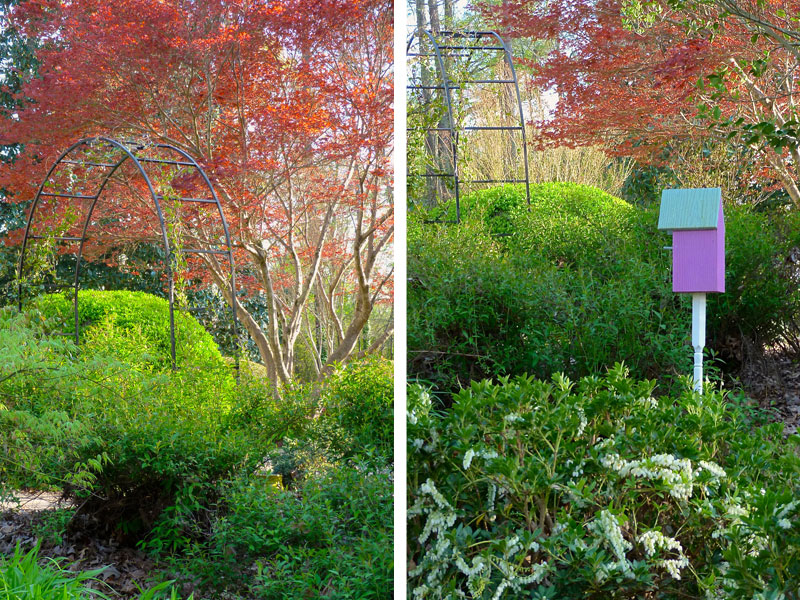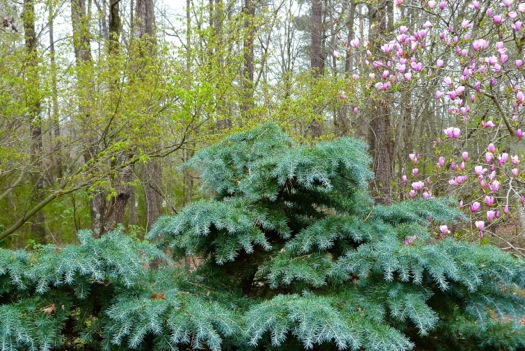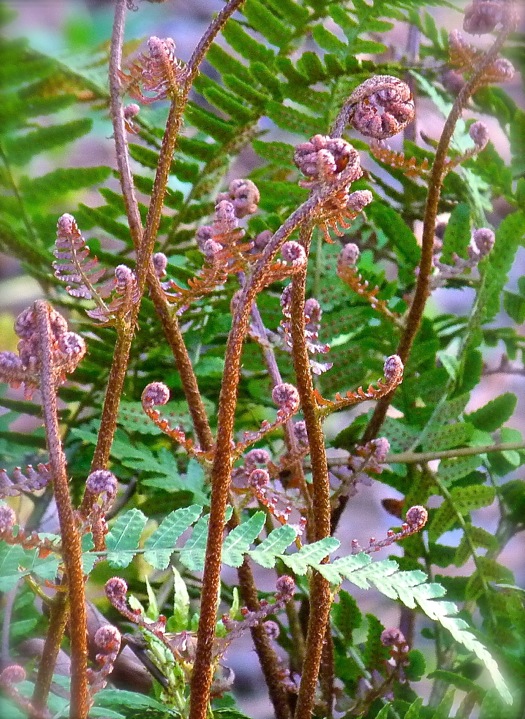Spring!
 Thursday, April 2, 2015 at 9:25PM
Thursday, April 2, 2015 at 9:25PM The definition of "spring" is "to leap forward," and while this is not the definition of the season, it could be! In the past two weeks, my garden has vaulted firmly out of the slipping clutches of winter and firmly into the lively, new season. Almost all trees and shrubs are awakening, and colors are becoming vibrant.
Redbuds, dogwoods and Japanese maples create a tapestry of pink, red, white and purple.




The white flowering shrub on the lower right above is Pieris japonica 'Cavatine.' Below is a close-up of its blooms:
I have about twenty Japanese maples in my garden, and I love them all! Here is emerging foliage of four of them: Clockwise from top left: Butterfly; Vitifolium; Orangeola; Sango-Kaku
Clockwise from top left: Butterfly; Vitifolium; Orangeola; Sango-Kaku
Hellebores are wonderful late-winter bloomers, but their blooms persist for months, gradually fading to shades of green. That double one on the left, by the way, is a chance seedling!
Looking toward summer, this scabiosa, or pincushion, bud will soon be ready to open:
The color of Deodar cedar 'Feelin' Blue' is especially vibrant this time of year:
A scene inside the woodland garden:
I am grateful for these flowers that grow wild in the woodland garden:
Cultivated flowers in the woodland garden include these sweet pinks: Top: Korean spice viburnum, in bud and bloom. 2nd row: Magnolia 'Jane.' 3rd row: Camellia 'Taylor's Perfection.'
Top: Korean spice viburnum, in bud and bloom. 2nd row: Magnolia 'Jane.' 3rd row: Camellia 'Taylor's Perfection.'
Most of my daffodils finished blooming weeks ago; these in the woodland garden are among the last to flower:
Finally, I am newly smitten each year when I see the emerging fronds of autumn fern, Dryopteris erythrosora:
Happy spring!
















